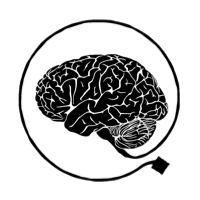Unicepts
Ruth Millikan, University of Connecticut
Proposed in Beyond Concepts; Unicepts, Language and Natural Information (Millikan 2017, Oxford UP) is that many of the roles traditionally thought of as played by concepts are played instead by “unicepts.”
Supporting this is the claim that most kinds recognized in common life and in science are, in Mill’s sense, “real kinds” (BC Ch.1-2). They are not “carved out” by us but found in the world. Their boundaries determine the limits of reliable inductions. Initially real kinds are discovered and clarified through ordinary experience. Later attention to the way others are using words becomes important.
Unless these have been stipulated and handed down explicitly, the names of kinds, like the names of persons, do not have definitions. Like the names of individuals, the names of kinds refer directly. The names of properties, actions and events have customarily though implicitly been treated as directly referential. Because all refer directly, unicepts of all these various kinds of entities can be treated together.
A unicept links together of all the information (and any disinformation) that one has imbibed and remembers about its subject. Rather than referring via a definition, a unicept refers to, is about, whatever it has been collecting information about. If it has mistakenly merged together information about several things, it is equivocal. Compare “weight” before weight and mass were distinguished. If information about one thing is mistakenly stored in several different unicepts, these unicepts are redundant. Compare “the evening star” and “the morning star”). This proposal has to rest on careful settlement of what “information,” both “natural information” and “intensional information” are to mean (BC Chs 11-12).
We know far too little about brain mechanics to speculate on the realization of a unicept in hardware. But metaphorically, a unicept of an individual or kind must be like a nest of leads that can potentiate one another and that connect to unicepts of properties and relations the individual or kind is, in this way, purported to have. Unicepts of other ontological kinds would be similarly connected in appropriate ways. Thus a unicept may be something like a node in a vast associative network of unicepts, activation of the unicept assembling different information on different occasions. There are many ways, many connections, in which to think of the same thing and the activation of these connections will be likely to potentiate activation of further connections.
Unicepts do much of the work traditionally allotted to concepts yet the difference is fundamental. A concept is a universal; the same concept is had by many people. A unicept is a particular; each unicept belongs to a different person. A concept comes with something like a definition or a paradigm that fixes what it represents. The referent of a unicept is whatever it has been collecting information about.
Why replace concepts? Considered freshly and candidly it is perfectly obvious that the words in a language are not supported with communal definitions or agreed on paradigms passed on from the adults in each generation to their children when neither parents nor children have any idea whatever how this is done. 40,000 words are learned in the normal child’s first 14 years. 40,000 definitions silently communicated in unknown ways? Recall the struggles and disagreements among conceptual analysts who are supposed all to have learned from their elders exactly what “knowledge,” “freedom,” “representation” and so forth actually mean.
Helen Keller was both deaf and blind. She communicated first using spelled English in a touch code and with this, learned to spell English in braille. She wrote much and fluently. Did she express the same concepts with English words that normal English speakers do? How did acquire them? Or was it not really English that she wrote? At various times she mentioned, for example, clouds, the sound of a trumpet, the color red. We have to conclude, I think, that the same thing can be thought of in quite different ways. There is no such thing as “the concept ‘knowledge’”or “the concept ‘freedom,’”
Suppose Keller’s thoughts were realized in activations of connections among unicepts. Thinking about clouds would then require a unicept devoted to collecting information about clouds. The burden abruptly shifts then to the question what “information” might be in a sense that allows it to be transmitted through language and also through ordinary perception of states of affairs. (Beyond Concepts; Unicepts, Language and Natural Information, Chs11-12)

“ We know far too little about brain mechanics to speculate on the realization of a unicept in hardware.” [knowing too little fails to stop me]
I propose the following: A specific unitracker (the mechanism which recognizes a pattern, where pattern = unicept) is realized in the cortex by a single L4 and its associated L2,L3 cells, so, a cortical minicolumn. Unitrackers within a given cortical column (“column” determined by the set of unitrackers receiving input from a specific thalamic “node”) coordinate and compete! among themselves (via L2,3 inhibiting and disinhibiting interactions) as modified by top-down influence (from hierarchically higher level unitrackers). Winners of the competition generate output in communication layers (two separate L5 layers and an L6 layer) and one of those outputs is sent up the hierarchy to the next thalamic node (with its own unitracker audience), another is sent back to the previous thalamic node (predictive feedback), and another to other action/memory mechanisms. The L5,6 “layers” constitute Chris Eliasmith’s semantic pointers.
*
[just some thoughts. Do with them as you will]